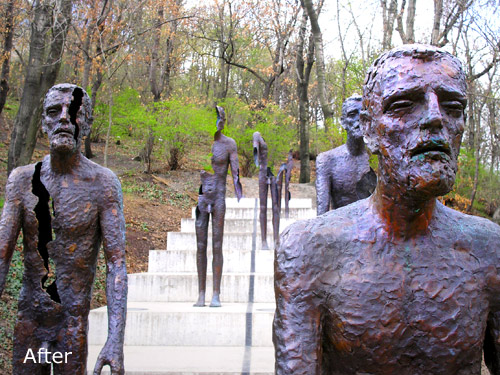Photographs may also have merit because of reasons other than being technically sound, i.e according to established parameters. A photograph may be described as : stunning; unnerving; intriguing; haunting; cute; creative; descriptive; evocative; pure; uplifting and any one or more of a litany of adjectives. As photography is defined as an artform I believe it is important to follow intuition which is at the heart of creativity. Photographers are as diverse in their choice of subject as they are in their technique. There is always room for stretching the boundaries and portraying what may never have been seen before.
Constructive feedback is always welcome to both practical and intuitive photographers.

A Powerful Image For Love
just loved the sentiment here and wanted to save it somewhere, so here is as good a place as any
In Photography, Rules Aren't Laws is a great read which examines some rules and when it can be beneficial to break them.
Composition Articles - Breaking all the rules Gloria Hopkins suggests using the word guidelines rather than rules - I like that perspective!
Some helpul guidelines for effective composition
- Rule Of Thirds – add a sense of balance to your photo.
- Leading Lines –Use this to draw the eyes to the subject or to express the concept of traveling through the scene.
- Symmetry and Pattern – Have a symmetrical shot which is broken up by some sort of discord or irregularity.
- Viewpoint - Should you shoot from above, below, at an angle, far away, or close up?
- Background - Remove any distracting and/or unwanted elements before pressing the shutter button.
- Depth – Our eyes see three dimensionally, but the camera is two dimensional -have objects/subjects in the foreground, middle-ground, and background of the scene. Also, overlapping some elements can help the eyes to interpret depth in a scene.
- Cropping - Whenever possible, it is best to “fill the frame” with your subject.
What Do You Think ?
The following examples were provided on Digital Photography Tips.Net which I've referred to elsewhere because it is such a comprehensive resource. They were used to compare the same shot taken by two photographers, one experienced and the other a novice (interestingly, it was written by the husband of the duo)
With respect to subject interpretation, Edward Weston says it in a nutshell, "I see no reason for recording the obvious."
What is a good photograph ? at Photoluminary





No comments:
Post a Comment